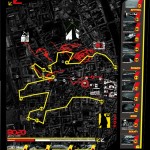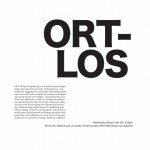Quantum Architecture
iA#4 Quantum Architecture, Kas Oosterhuis, Han Feng, Xin Xia [eds], Jap Sam Books 2011, ISBN 978-9490322274
The scientific reading of natural systems and phenomena has recently been adopted as the main driving force for new development in architecture. Due to the study of flocks of birds, genetic coding, fractal geometry and neural networks, various abstract computational machines have been invented. They, have facilitated our ability to realize new kinds of spatial and material organization, and hence enriched our understanding of the inner logic of space and architecture.
The fourth issue of the iA bookzine presents quantum theory as a new stimulus for architecture debate. Quantum theory, as the most precise explanation of our physical world, has not only triggered a tremendous technical improvement, but has also introduced a revolutionary quantum world view that considers the material world as a non-deterministic construct, deciphered with probability and interactivity. From this point of view, true interaction can be envisioned between users and their constructed environments, and between designers and their computational tools.
Papers collected in iA#4 come from both the theoretical perspective that adopts quantum paradigm as the conceptual model to examine the new condition of cultural, social and spatial organization, and the computational perspective that presents a novel computational concept and strategy, based on the quantum world view and its related reflections. Quantum physicists, architects, sociologists, researchers and students come together in this issue of the iA bookzine to challenge the new territory of Quantum architecture.











You must be logged in to post a comment.